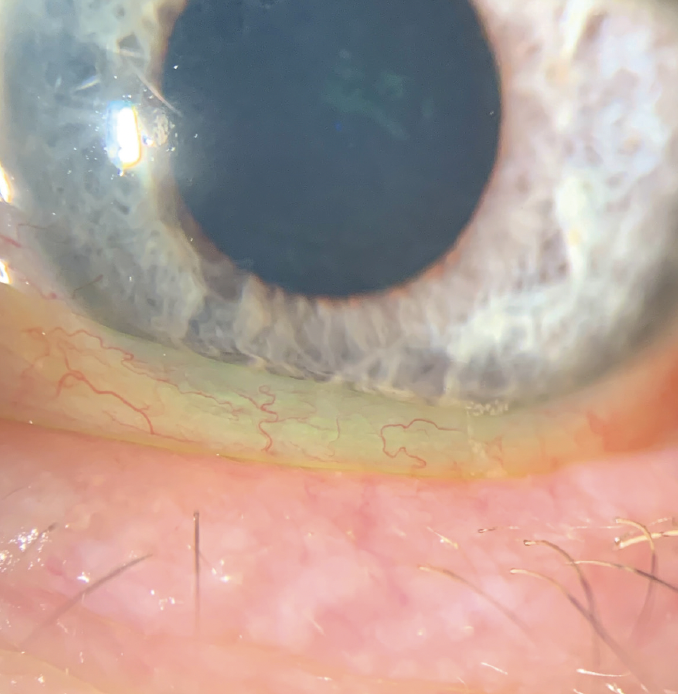The conjunctiva has been overlooked for too long in ocular surface disease (OSD) circles in favor of its more illustrious and complicated neighbor, the cornea. However, if we view the tear film as a dynamic, flowing ocular fluid, then there is an obvious need for a smooth surface to allow it to properly exit the ocular surface through the puncta and enter the nasolacrimal drainage system. So, what happens when this goes wrong?
THE LOWDOWN ON CCH
Conjunctivochalasis (CCH) is a common OSD masquerader. It is important to note that we still have an incomplete understanding of the interrelationship between CCH and other ocular pathophysiologies and their roles in OSD.
CCH is defined as loose, redundant conjunctival tissue most commonly found in the inferior bulbar conjunctiva.1,2 It is frequently identified based on conjunctival folding, staining, and prolapse (Figure). CCH tends to be chronic and bilateral, although it is also commonly asymmetric.1,2 The prevalence of CCH has been shown to increase with age; the incidence ranges between 44% and 98% of individuals 60 years of age and older.1 Investigators theorize that the cause of CCH lies in processes such as mechanical friction, inflammation, and delayed tear clearance.1,2

Figure. Conjunctivochalasis demonstrated by redundant bulbar conjunctival tissue along the lower eyelid margin.
Some patients with CCH will remain asymptomatic, although most patients present with similar symptoms to patients with other forms of OSD, such as dry eye disease, including irritation, dryness, fatigue, burning, and fluctuating vision.1,2 CCH can act as a dam or inhibitor of tear flow, sometimes even plugging the punctal openings, which leads to symptoms of tear overflow, including epiphora and watery eyes.1,2
TREATING CCH
Treatment strategies for CCH start with removing mechanical irritation and inflammation with medical therapies, such as topical steroids and frequent lubrication. Some clinicians theorize that low dose brimonidine may also be a treatment option for CCH, but this strategy remains controversial.1,2
For cases of significant or recalcitrant CCH, procedures such as excision and ligation tend to be the go-to treatment of choice; various techniques are utilized based on practitioner preference. I expect these procedures to continue to be refined over the coming years. For example, cauterization or radio wave electrosurgery techniques may have the added benefits of increased safety profile and decreased recovery time. However, excision and ligation procedures will most likely have a continued role in more severe cases.1,2
- 1. Marmalidou A, Palioura S, Dana R, Kheirkhah A. Medical and surgical management of conjunctivochalasis. Ocul Surf. 2019;17(3):393-399.
- 2. Meller D, Tseng SC. Conjunctivochalasis: literature review and possible pathophysiology. Surv Ophthalmol. 1998;43(3):225-232.



